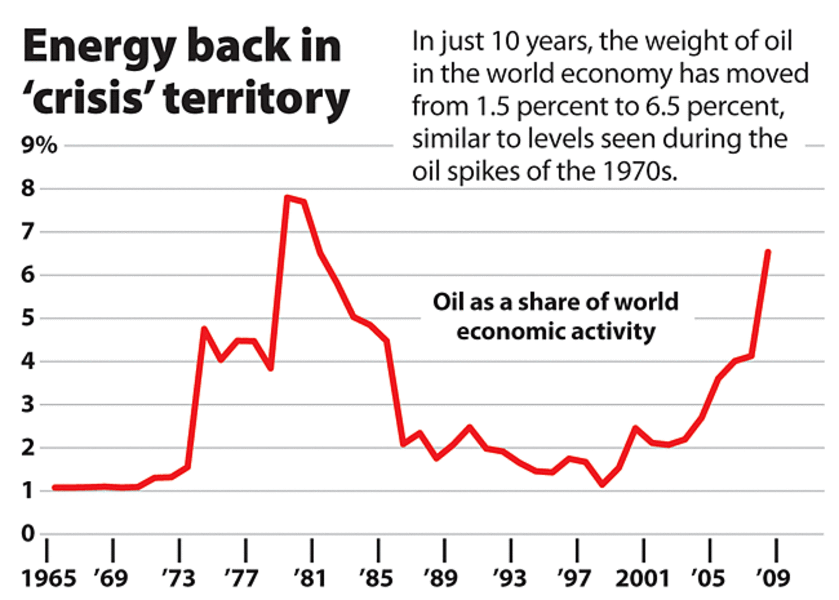How to cut the price of oil
Loading...
Can the world do anything – fast – to stop the surge in oil prices?
A newly announced boost in oil production by Saudi Arabia is a start.
And recent steps by several Asian nations to cut subsidies for oil consumption should reduce global petroleum demand.
No guarantees, but such actions may ease the price pressures that pushed oil to a record $139 a barrel earlier this month. Energy costs have become a driving force of inflation besetting US and global consumers.
Policymakers don't have a magic wand to wave. The long-term challenge will remain: Demand for energy keeps rising even as it grows harder to boost oil production.
But energy experts cite a range of tactics that could provide some relief. Even efforts that don't bring a rapid change in supply or demand might have an immediate effect on market psychology.
Among the options:
•Nudge consumers toward conservation.
•Encourage more oil production.
•Ramp up investment in alternative energy sources.
•Discourage speculative investing in oil markets.
•Phase out subsidies for oil consumption.
"There's a lot of low-hanging fruit out there," involving boosting supplies or curbing demand, says John Kilduff, energy analyst at MF Global in New York. "Longer-term plans might get rewarded here in the marketplace today."
Much of this past year's run-up in oil has to do with prospects for supply and demand looking years into the future, he explains. It's hard to sort out how much of that can be classified as a speculative "bubble" and how much is a rational sobering of the outlook for supply and demand.
But in either case, many analysts say that policy changes can have an impact on current market behavior.
The oil issue topped the list of concerns as finance ministers for the Group of Eight industrialized nations met in Osaka, Japan.
"Elevated commodity prices, especially of oil and food, pose a serious challenge to stable growth worldwide," they said in a joint statement Saturday. This also creates particular challenges for the world's "most vulnerable" people, they said, and for global inflation rates.
In the US, consumer prices surged 0.6 percent in May alone, according to a government report Friday. Oil accounted for most of the surge.
Crude oil prices have doubled in the past year, with most of that rise occurring in the past five months.
Oil prices closed at about $135 per barrel Friday, down a bit because of news reports that Saudi Arabia was planning to expand production. United Nations Secretary General Ban Ki-moon detailed those plans on Sunday after meeting with Saudi leaders. He said Saudi Arabia will raise output by 200,000 barrels per day, or about 2 percent.
That would be a welcome move in a world where supply and demand appear increasingly to be on a fine edge.
The market is so tight that some analysts see no quick fixes.
What else can be done?
Although they may not be politically easy, multiple choices exist:
A clampdown on money supply. One obvious step that could help tame oil prices is for central banks around the world to raise interest rates. That could squeeze out the excess money supply that typically fuels the inflation of consumer prices.
But it's not clear how fast such moves will occur. Some central banks (including America's Federal Reserve) are also worried about a slowdown in economic growth – which typically calls for cutting rather than raising interest rates.
For months, in fact, some economists have been predicting that a US-led economic slowdown will reduce worldwide demand for oil and that prices will fall.
Part of that scenario has come to pass: Global demand is rising much slower than expected this year. But so far it hasn't pushed oil prices down.
Conservation. Amy Myers Jaffe, an energy analyst at Rice University's Baker Institute in Houston, says stricter emissions rules for cars in the US and China would send a signal that nations are determined to cut consumption.
"If the Democrats win" the White House, she says, their fuel-economy plan "would shave 6 to 7 million barrels per day off of US demand by 2020.
Some experts add that other conservation options could have an immediate impact, from reducing speed limits to spending money to adjust traffic lights for greater commuter efficiency.
Ms. Jaffe says encouraging workers to telecommute or carpool just one day a week "would dramatically lower demand."
Production. It's not just Saudi Arabia that could pump more oil. The problem, of course, is that it's controversial.
"I believe that Alaska is a religious experience, so I don't mention Alaska," Jaffe says. More offshore drilling, from the Gulf of Mexico to the Atlantic coast, could yield 2 million barrels per day, plus big supplies of natural gas, she says.
Alternative resources. "The government has to take the lead in investing to help provide access to alternatives," says Tyson Slocum, an energy analyst with the consumer advocacy group Public Citizen in Washington.
Part of the effort, he says, would involve bigger tax incentives for consumers to install solar panels on their roofs and put hybrid cars in their garages.
Market regulation. Investor speculation may be playing a significant role in the oil-price run-up. Although not everyone agrees this is a big factor, many analysts support the idea of increased oversight of energy-contract trading, and new limits on "margins" – investors' use of borrowed money to place trades.
Tough love. The rising energy-cost burden has prompted India, Indonesia, and Malaysia to reduce fuel subsidies. This angers consumers but promises to reduce demand somewhat as people respond to real price signals.
Together, some of these changes might shift the mood of markets that now seem fixated on the notion that oil can only go up in price.





